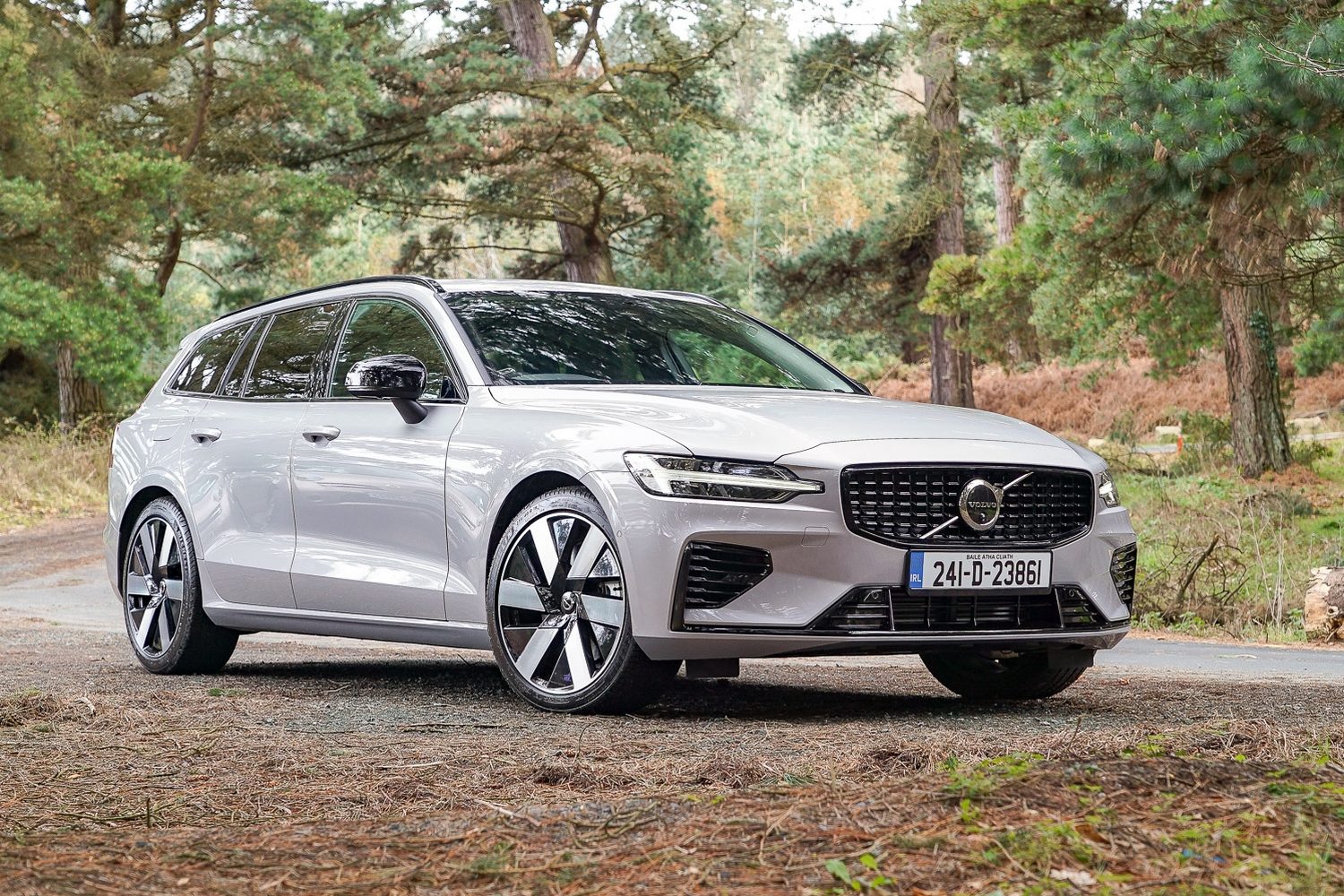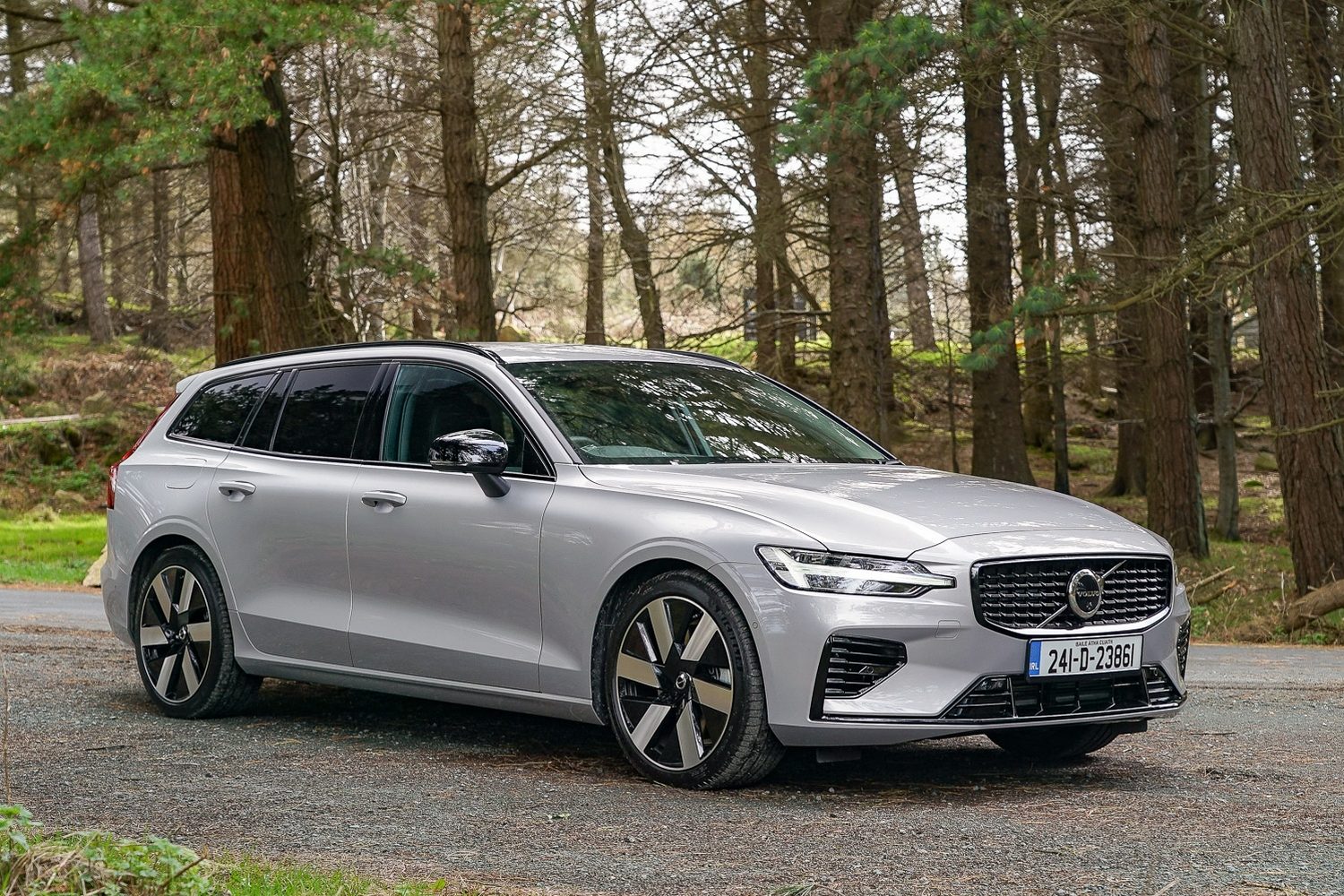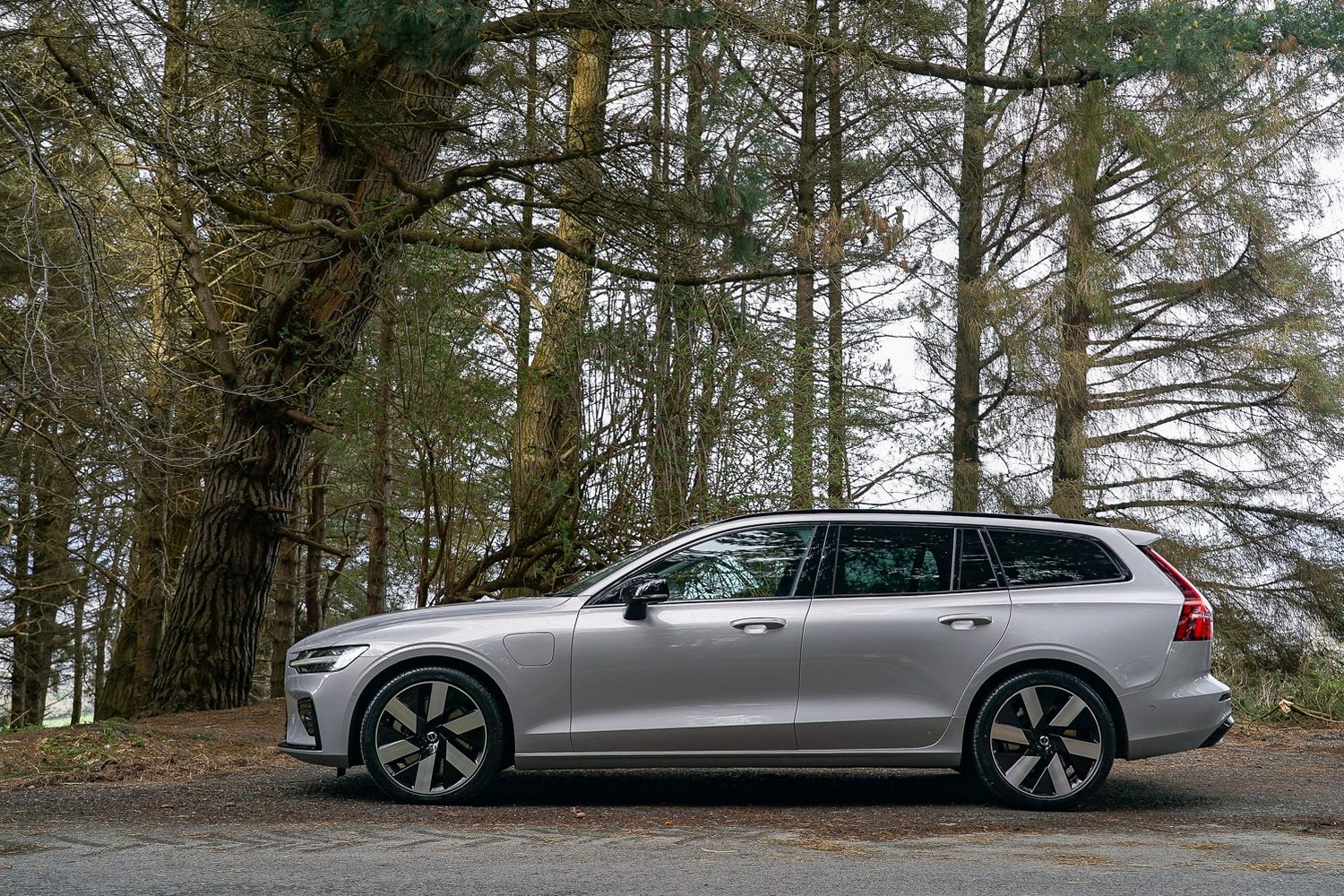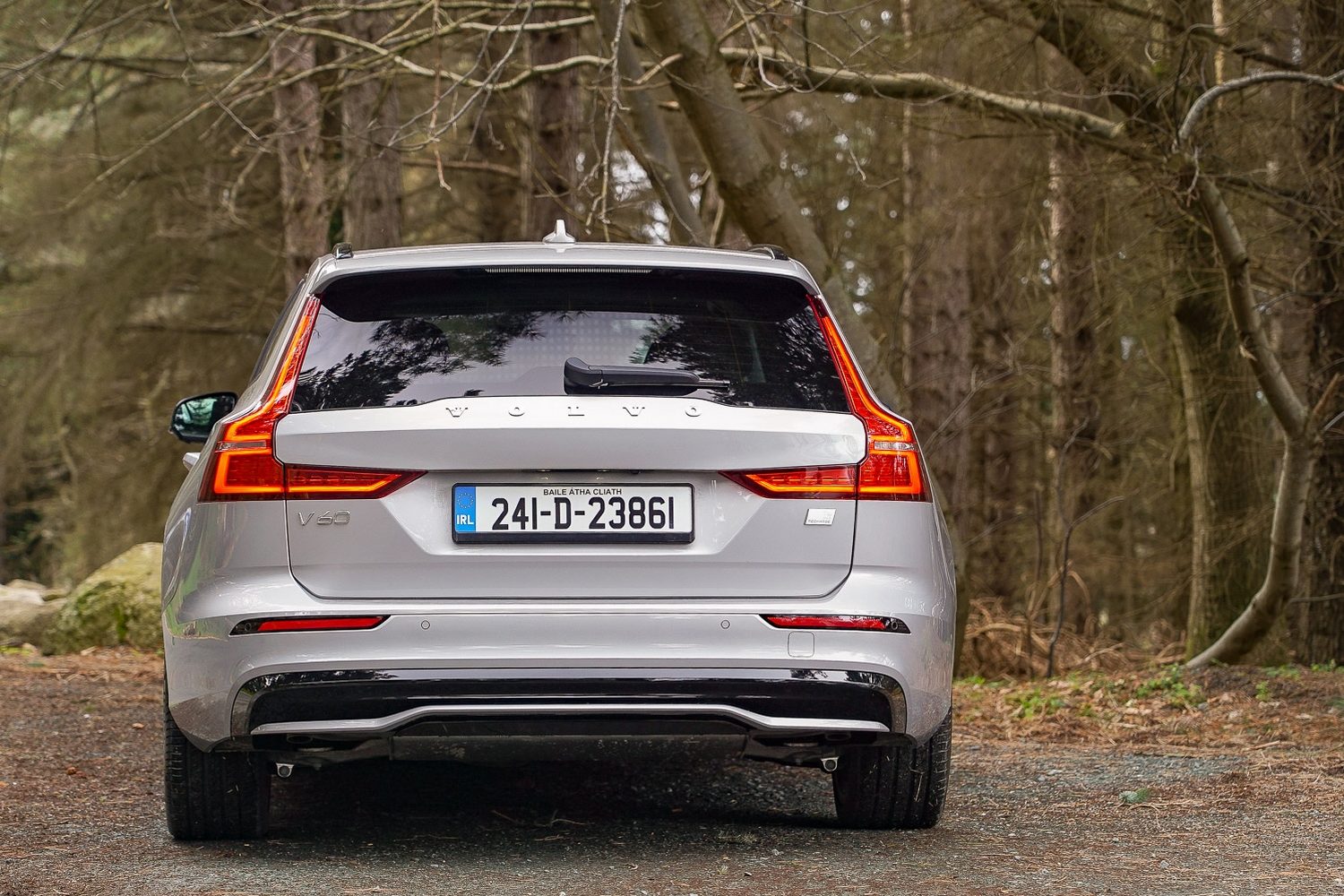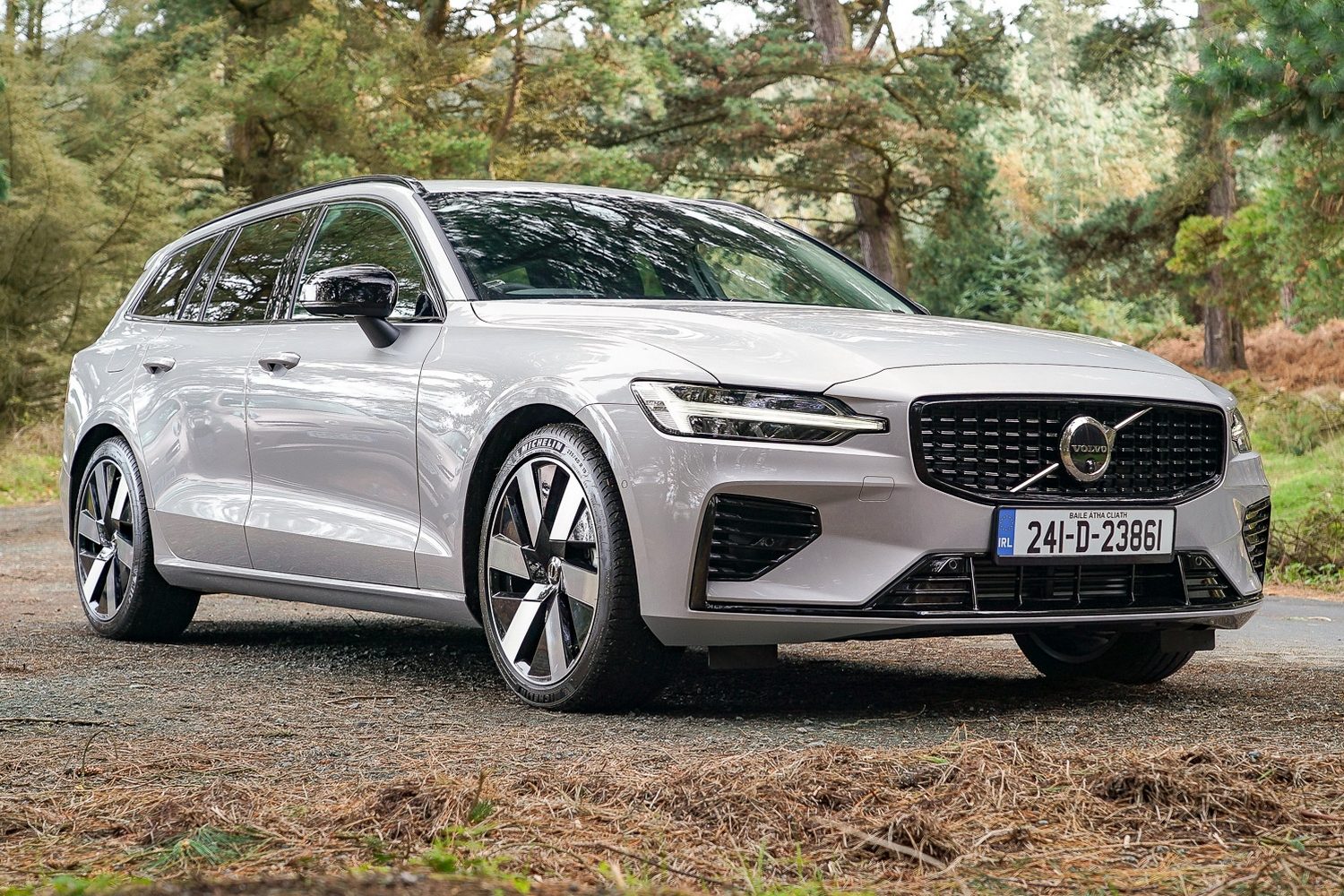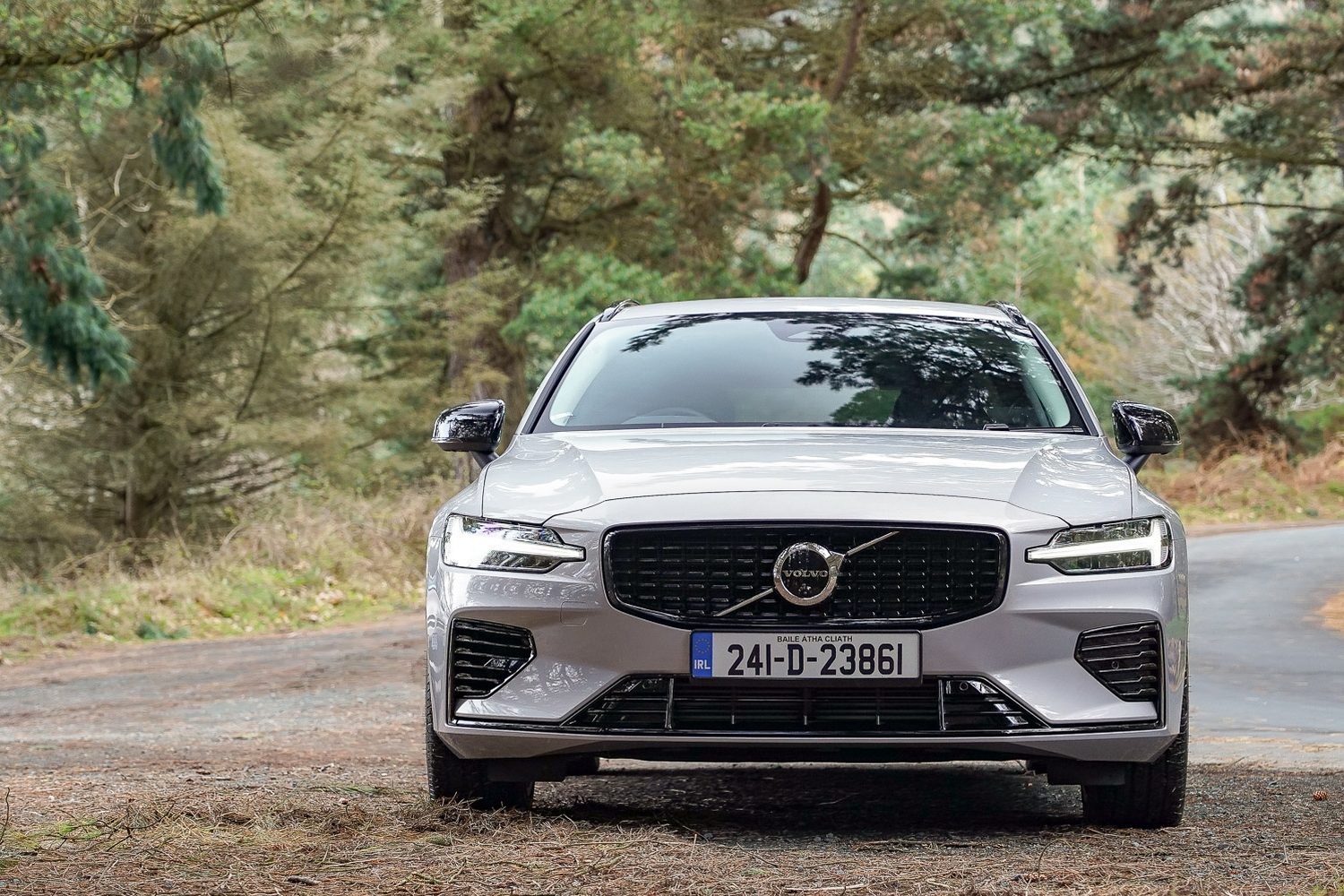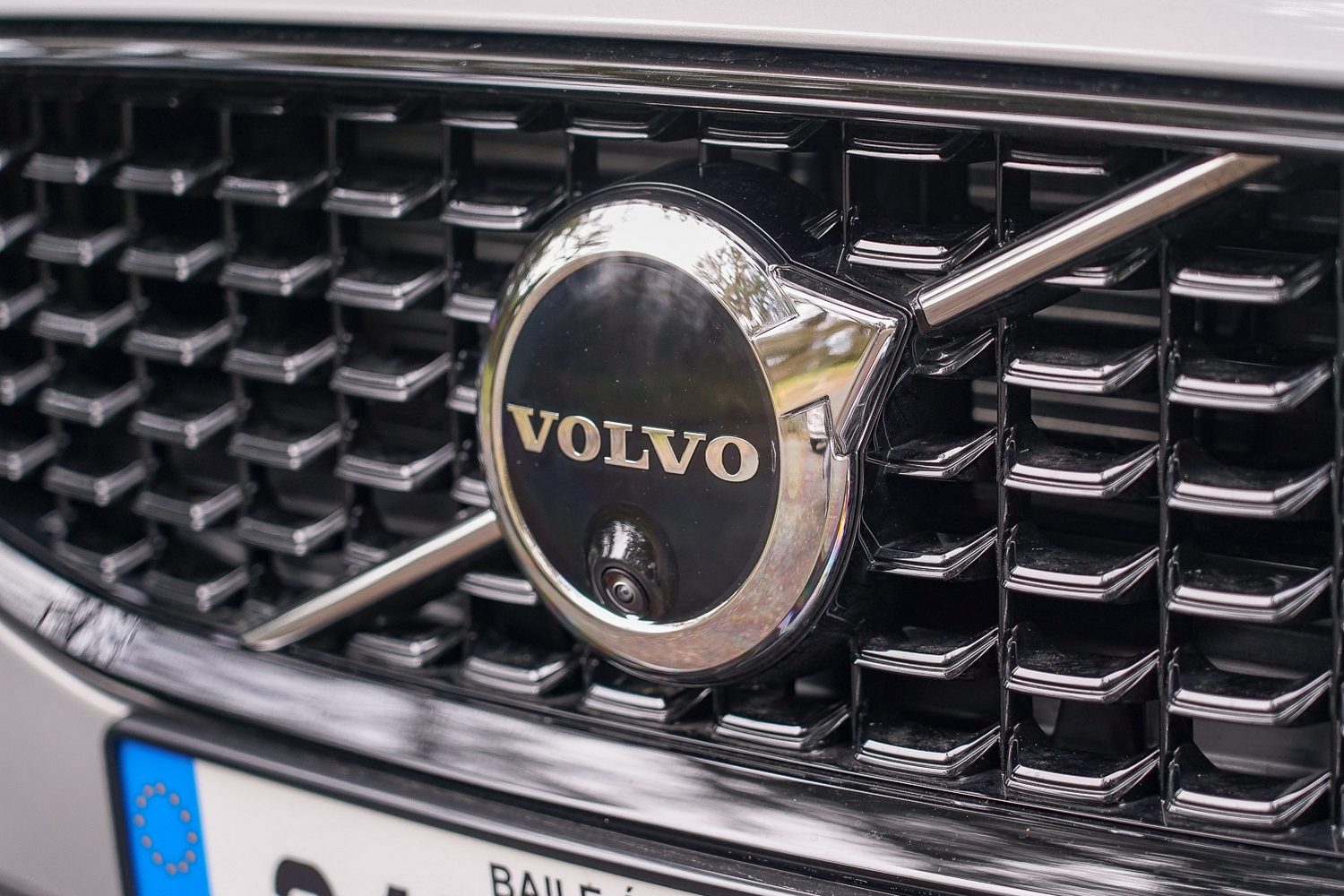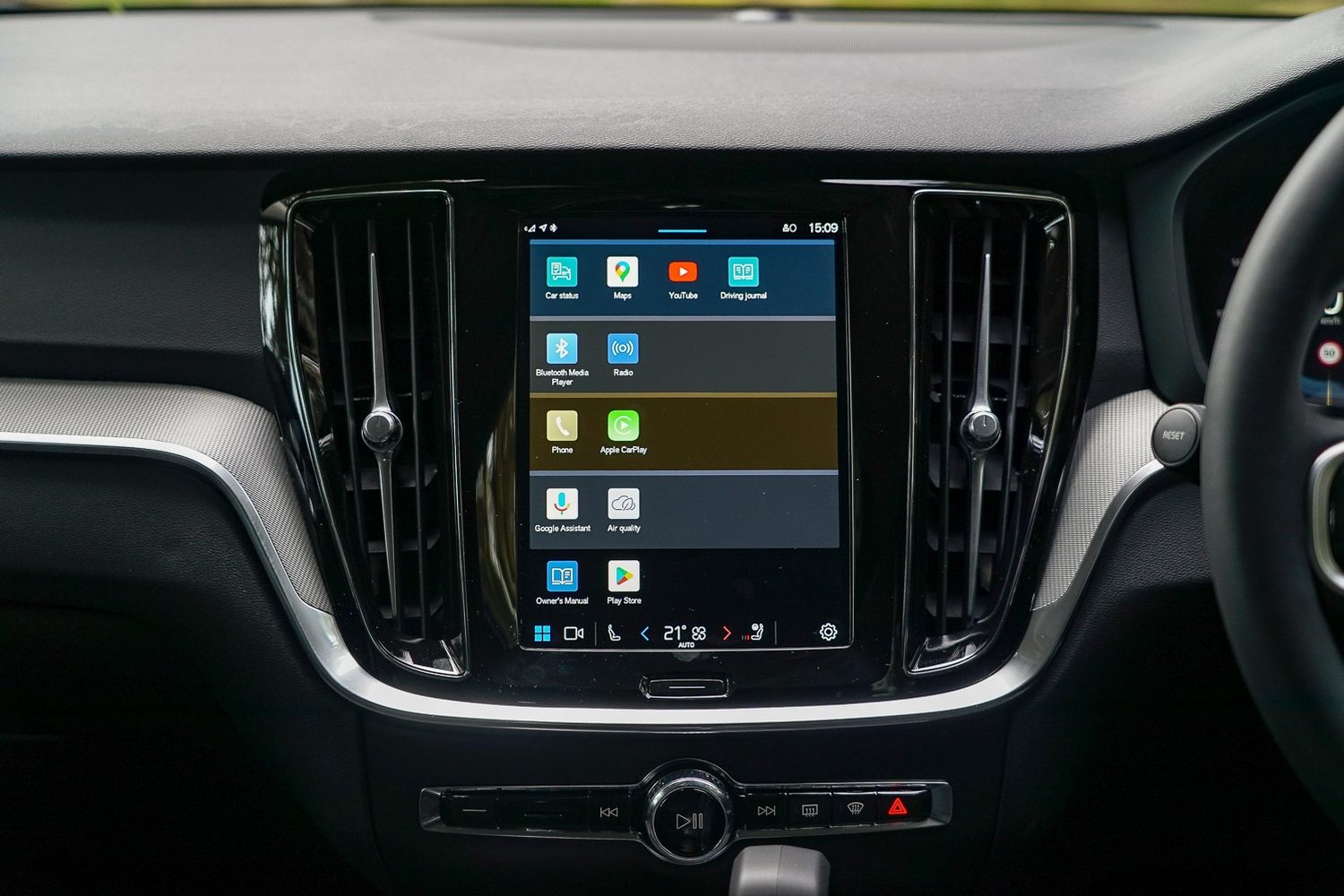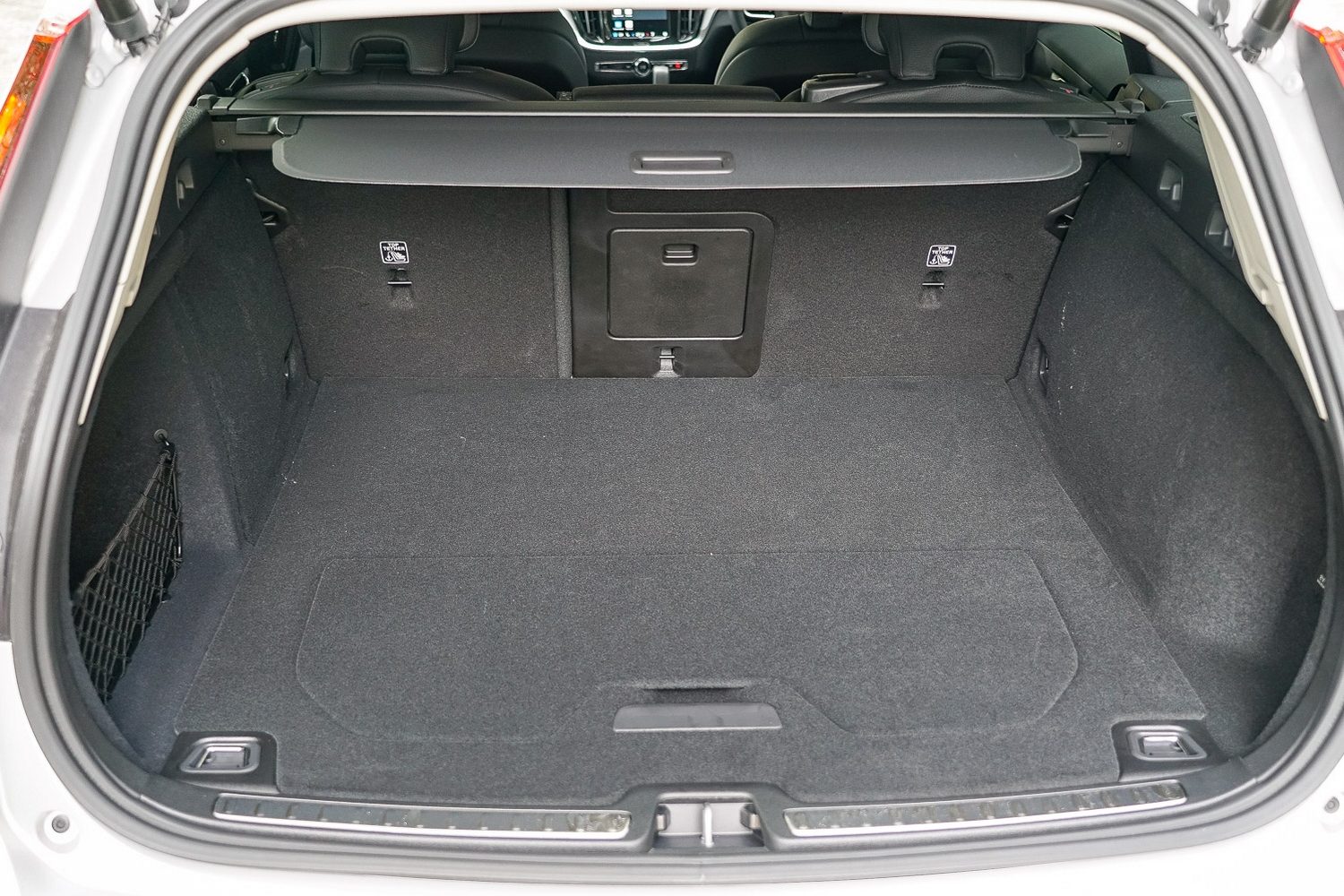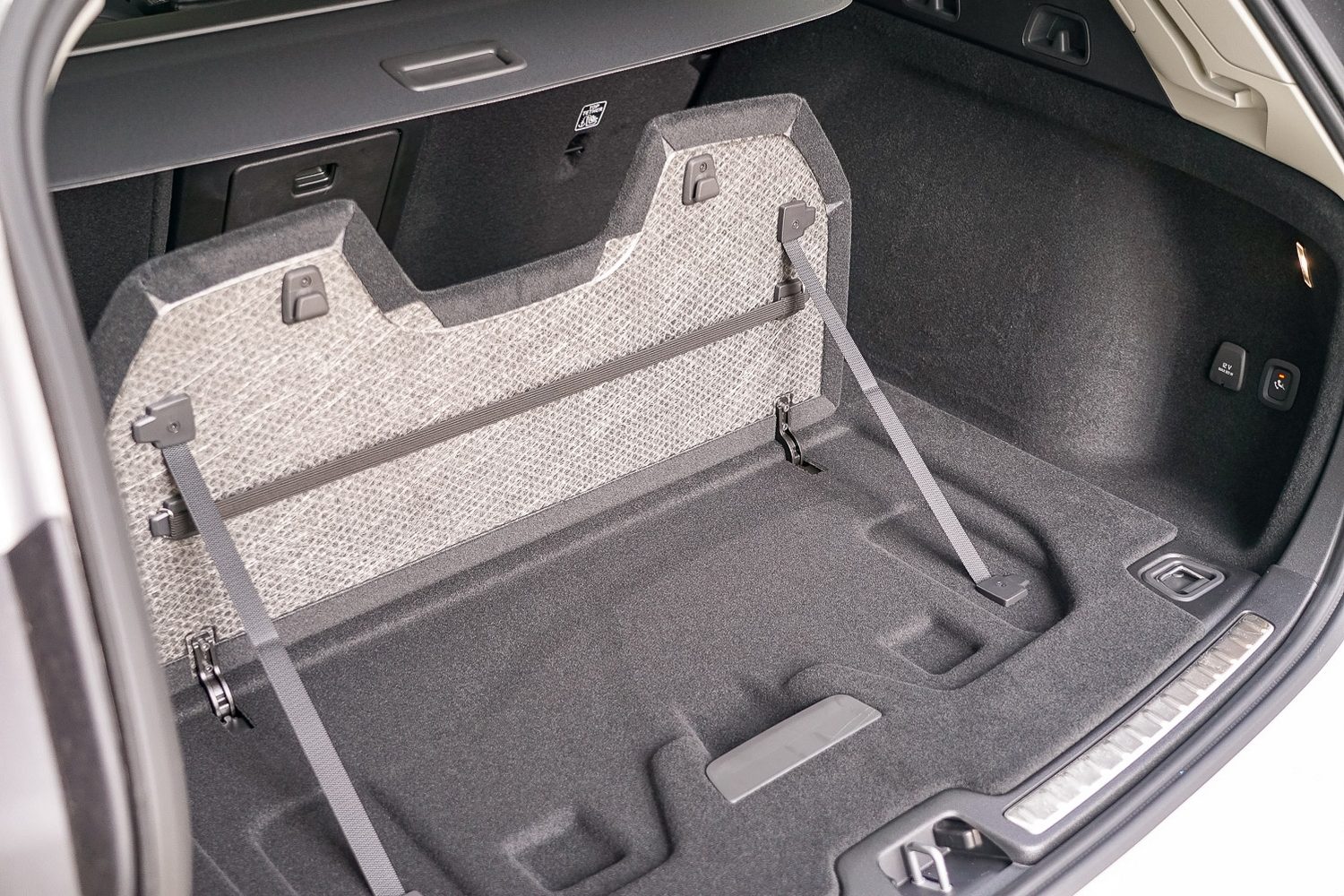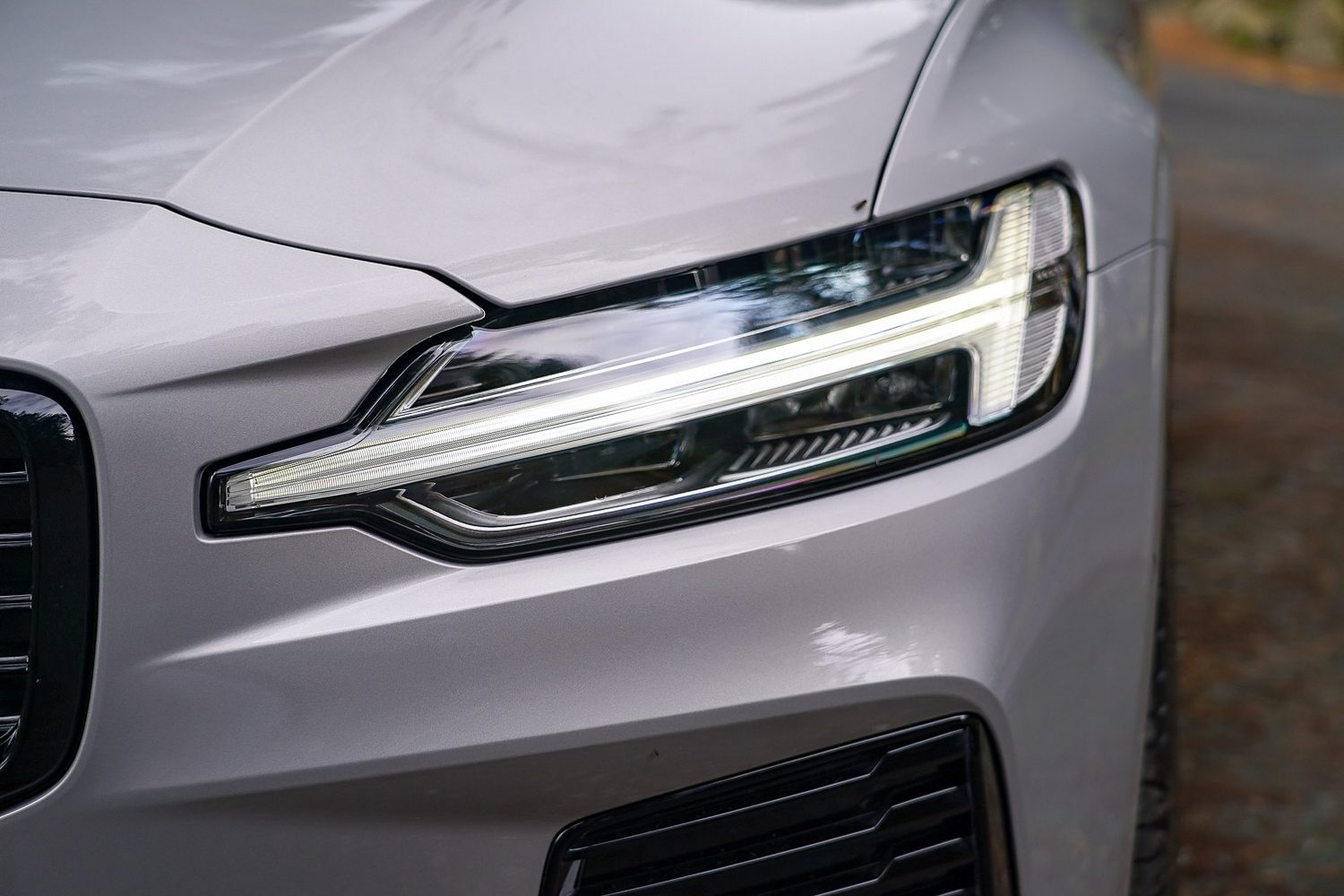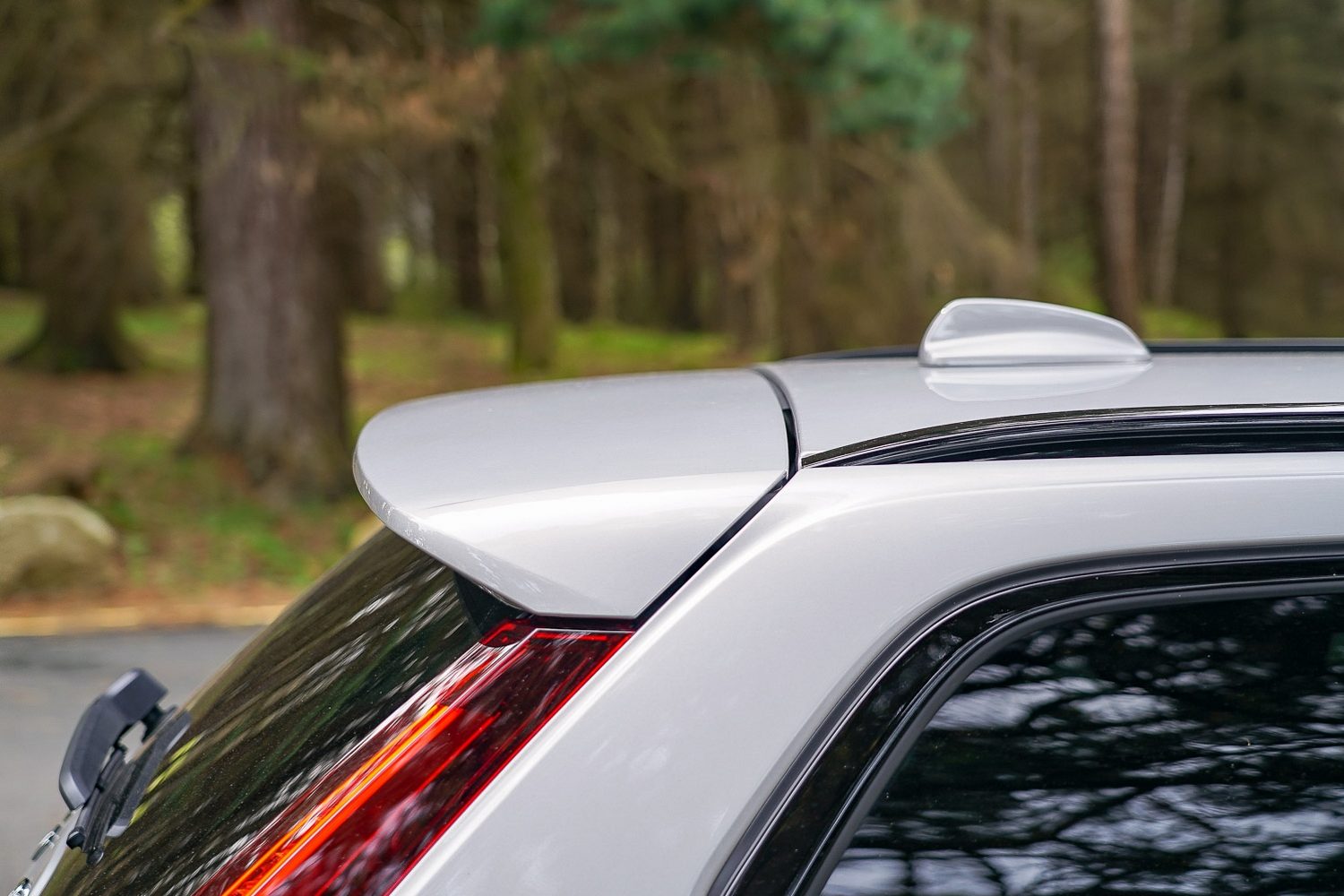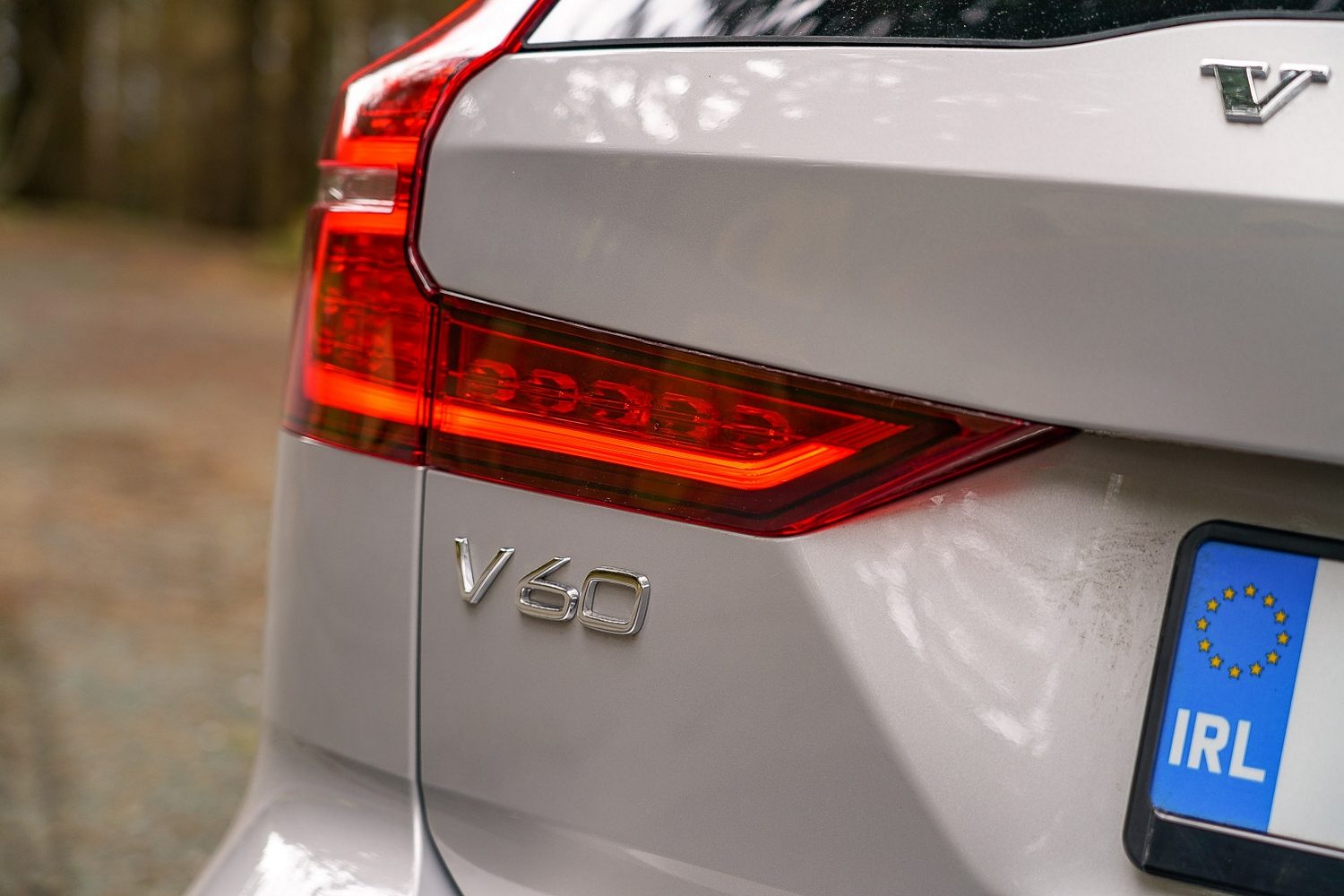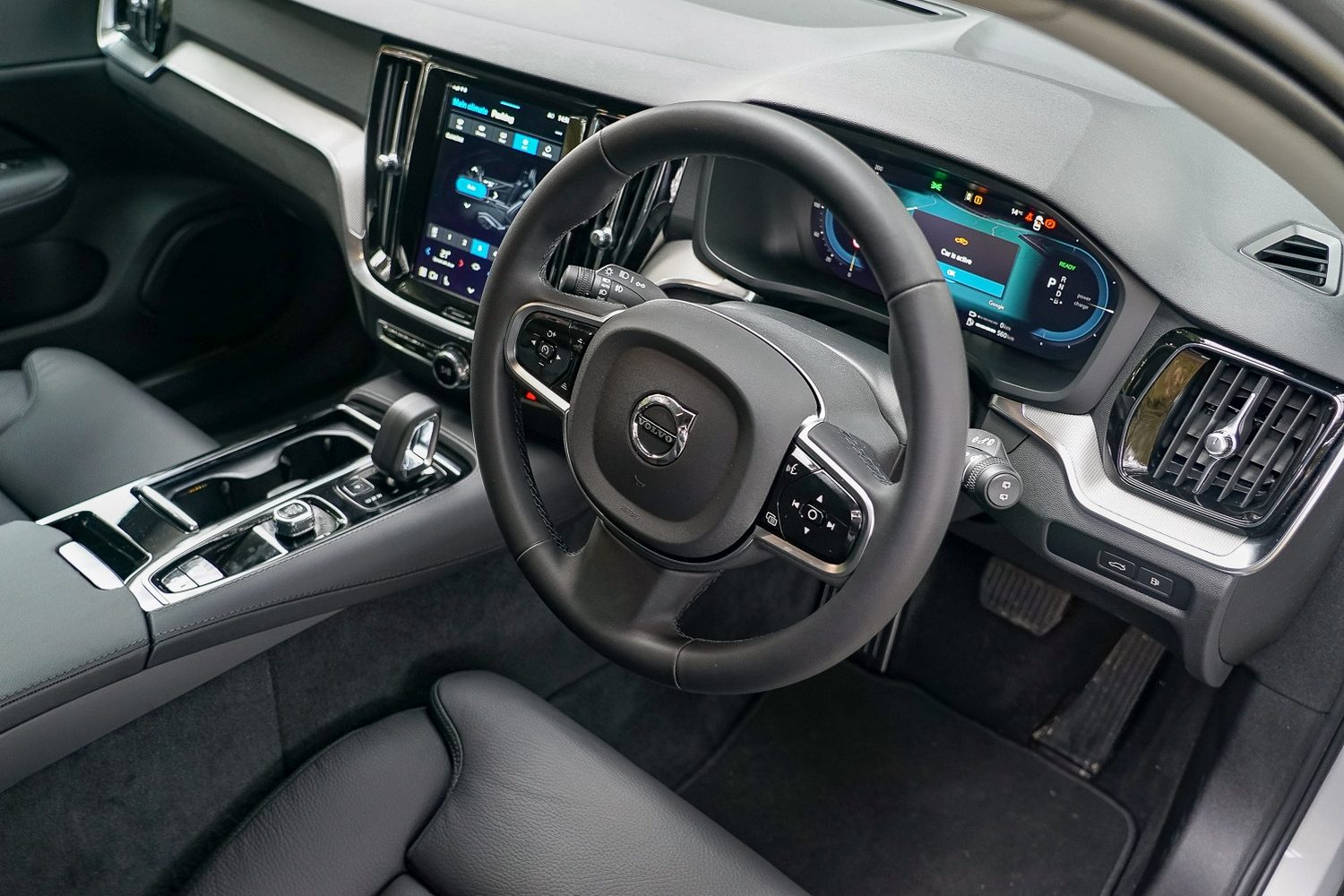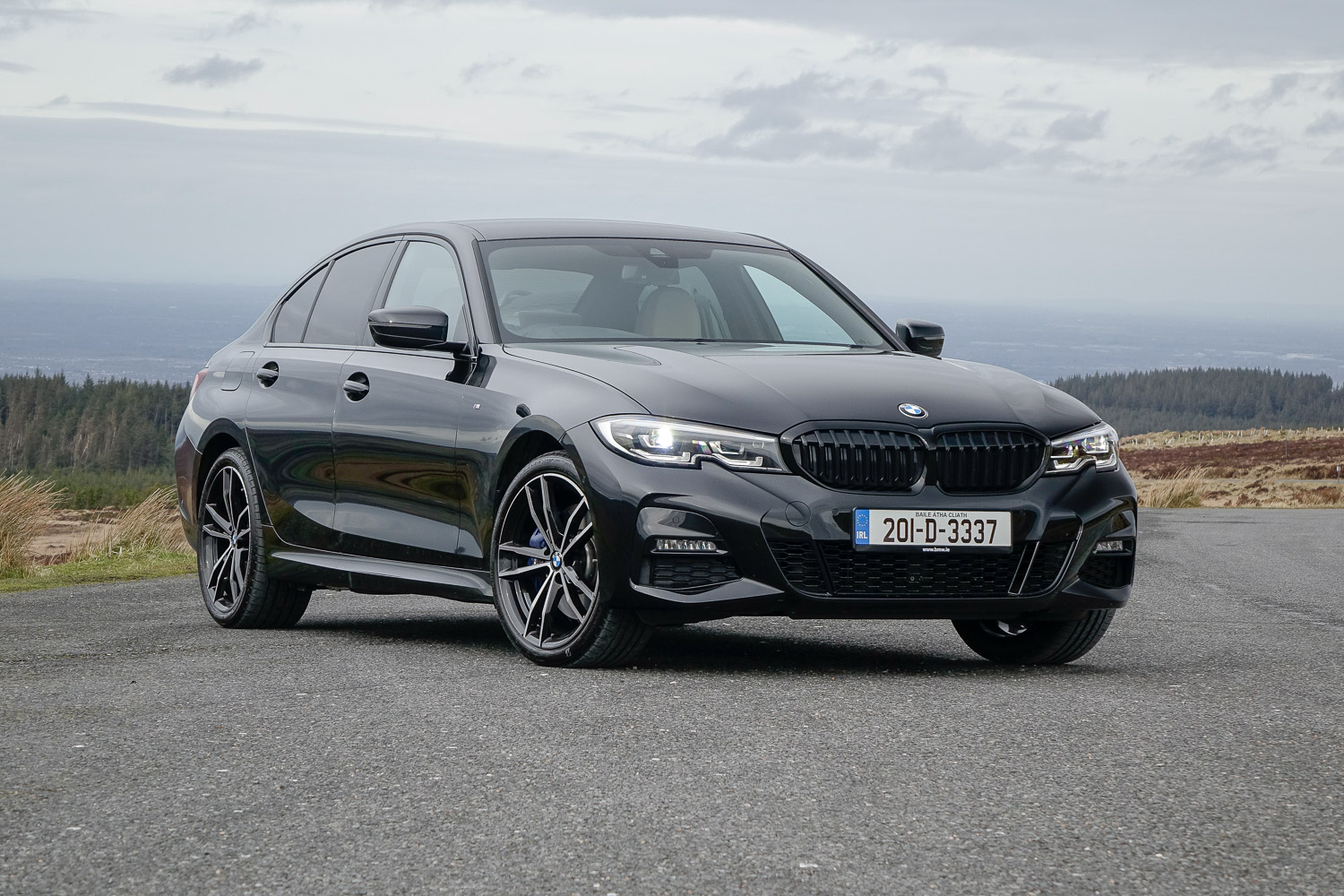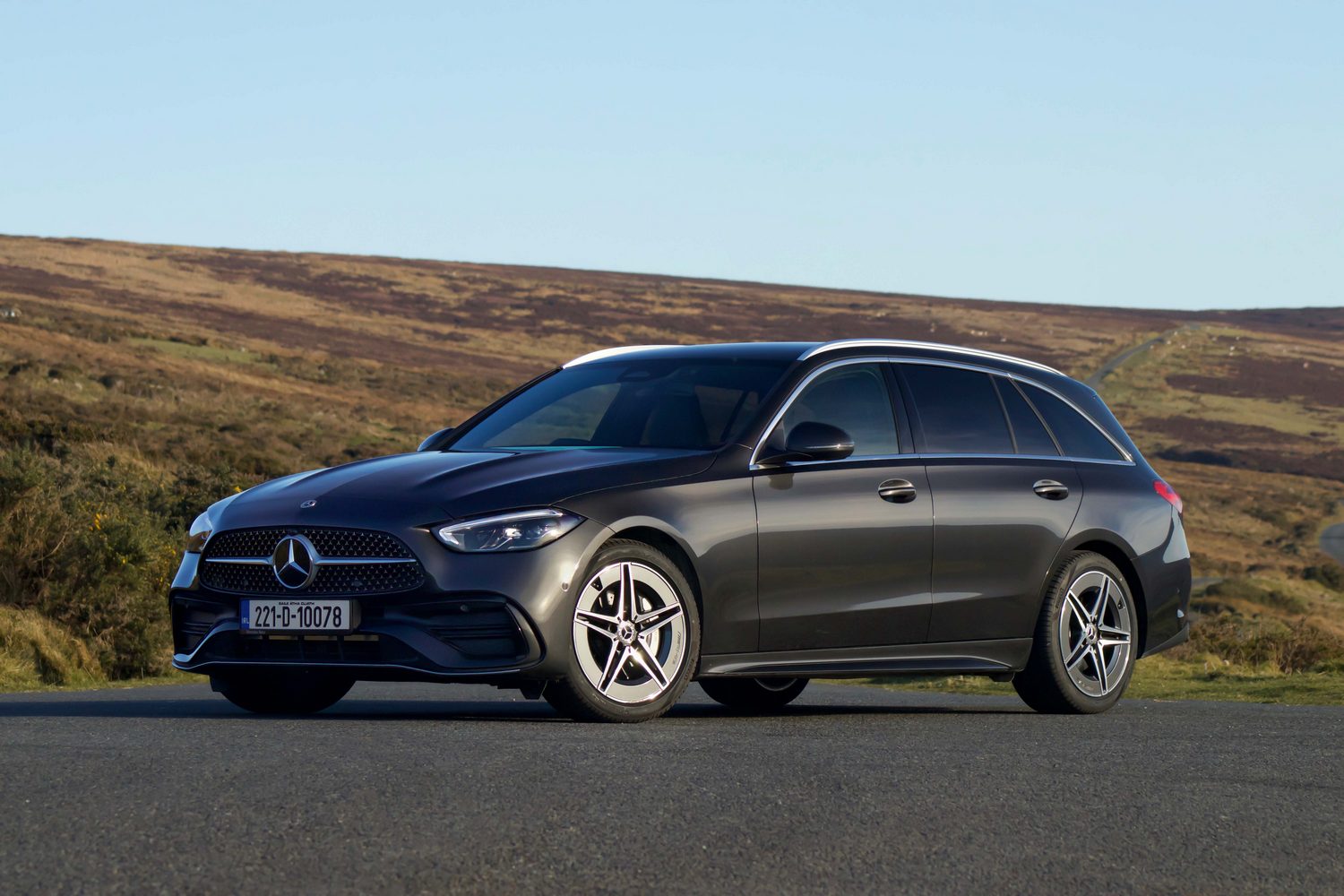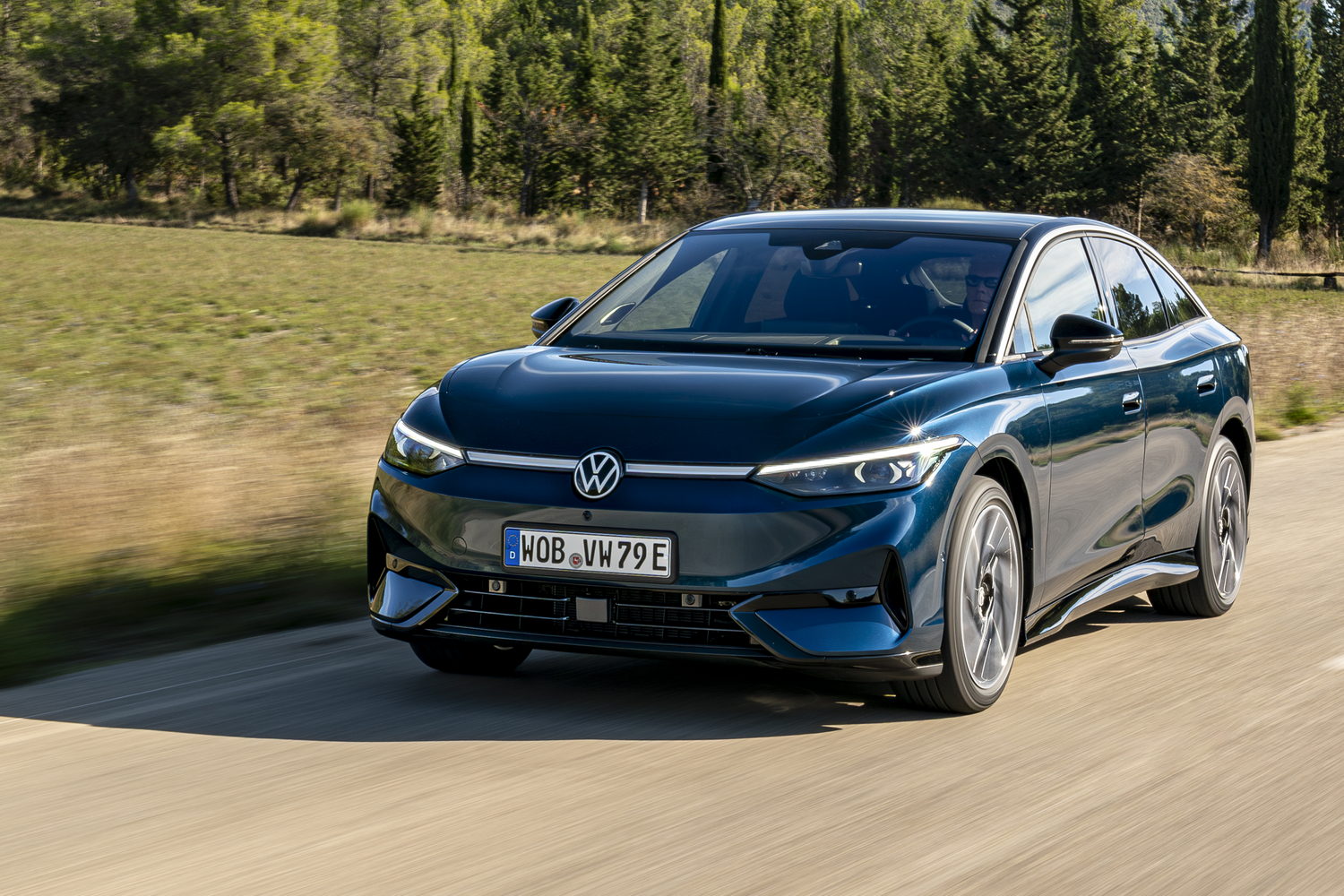Volvo V60 overview
It looks like time is running out for Volvo’s estates, cars that were once a staple of the Swedish company’s line-up. In the UK, the firm is already SUV-only, and it won’t be long before the entire line-up goes fully electric, too. The larger V90 estate has already been dropped, so the V60 T6 driven here could be the last chance for many to get behind the wheel of a new petrol-powered Volvo estate.
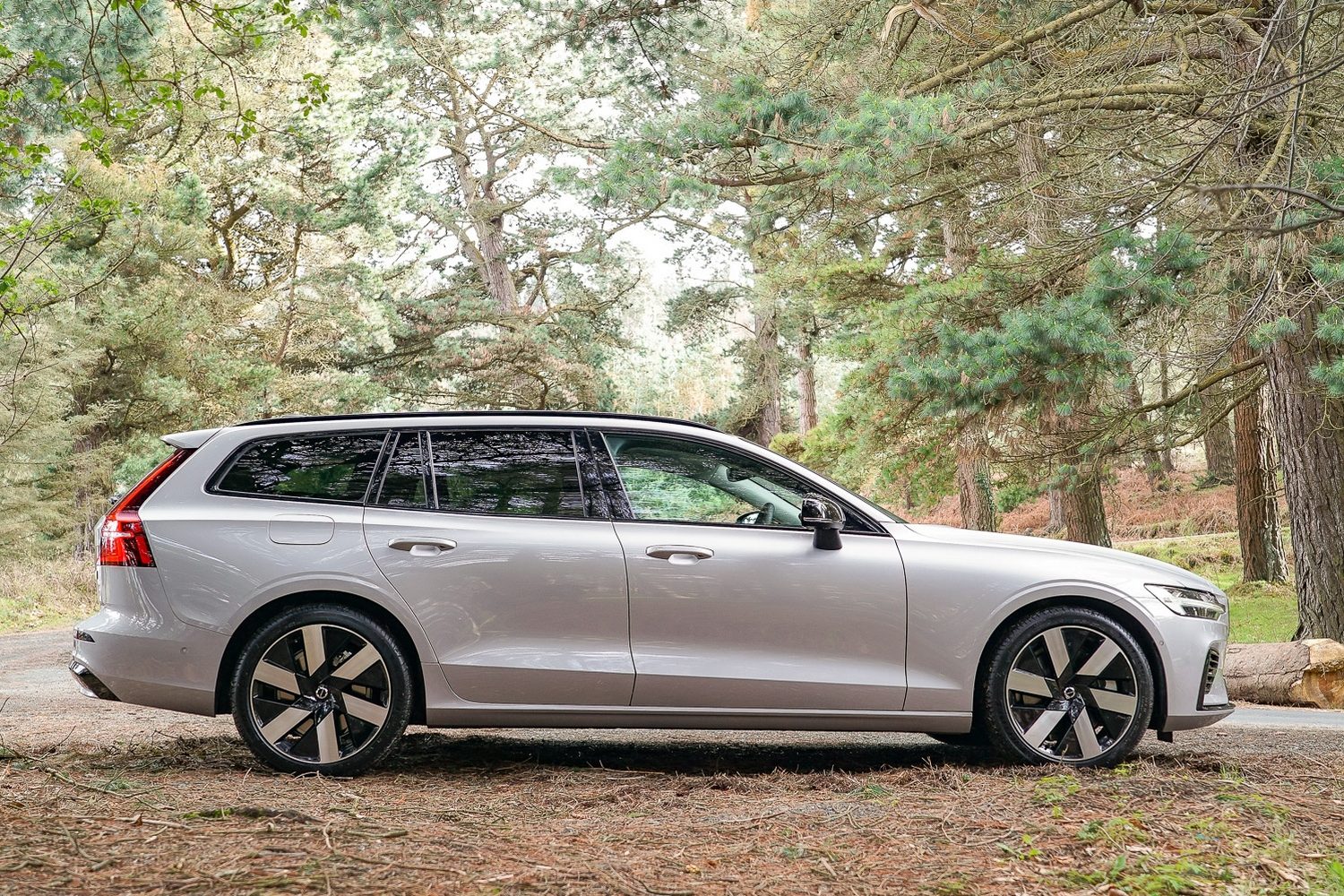
The V60 has been around since 2016, and it’s a challenger in the compact executive estate class, a spin-off from the compact executive saloon sector - and specifically the four-door Volvo S60, which is no longer offered in Ireland. That means the V60 is pitched as a rival to premium German machinery such as the Audi A4 Avant, BMW 3 Series Touring and Mercedes C-Class Estate. Of these three, only the BMW and Mercedes are available with plug-in hybrid drive, although Audi will join the bandwagon once the current A4 is replaced by the A5 Avant, which is due to be revealed later this year.
Look beyond these three premium brands and less obvious options include the Volkswagen Arteon Shooting Brake and the gigantic Skoda Superb Combi.
Of course, most buyers aren’t even looking at estates and are instead defaulting to an SUV. The Volvo XC60 uses the same running gear as the V60, while all the above-mentioned manufacturers also offer premium family SUVs in the same class, many of them with plug-in hybrid options.
The Volvo V60 model range
Further evidence that the V60 isn’t much longer for this world is the fact that it’s only offered with a choice of two powertrains. These are badged T6 or T8, and they come in Plus and Ultimate trim levels, respectively.
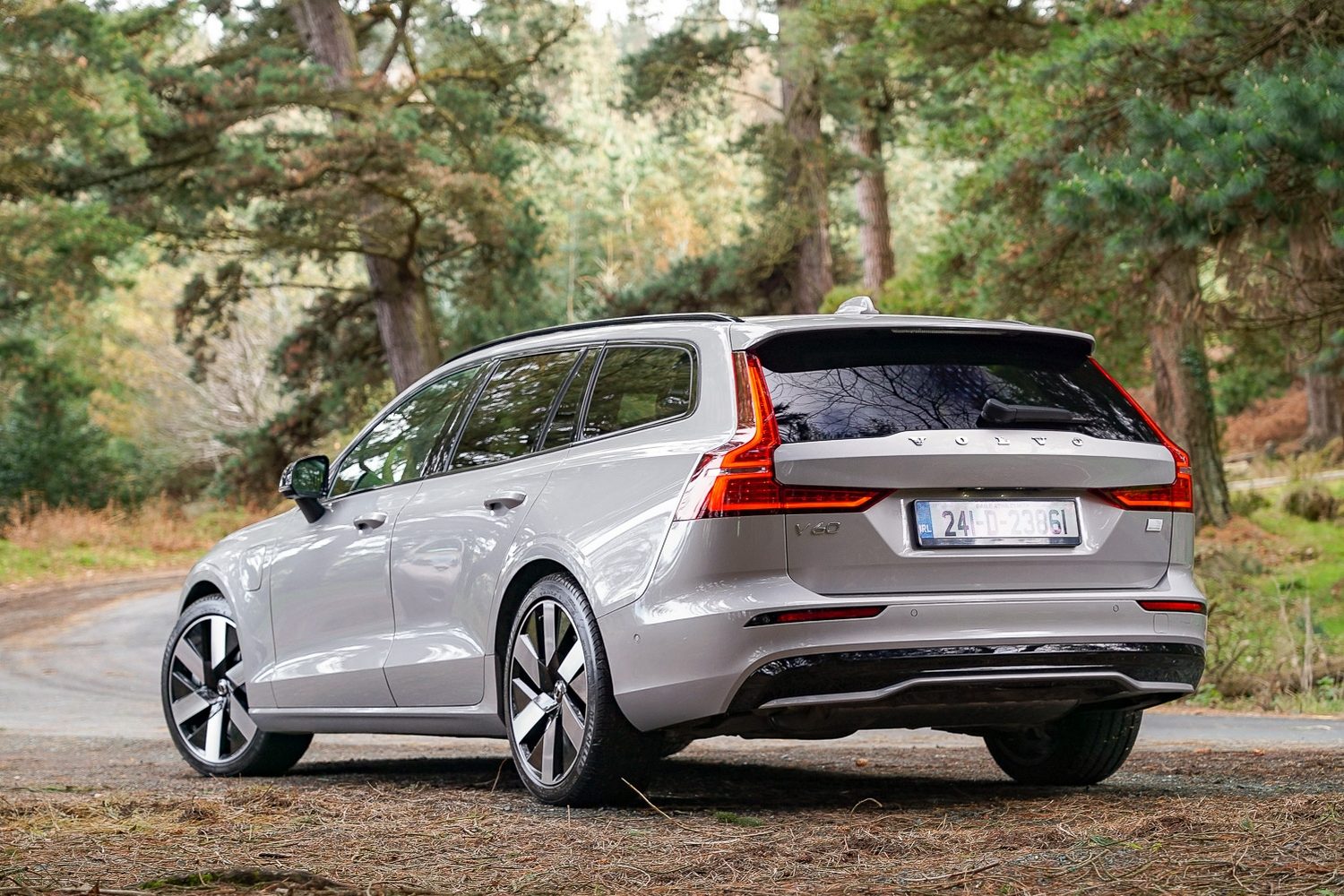
Starting with the €66,500 T6, this features a 2.0-litre four-cylinder petrol engine, which on its own sounds small for the price, but it’s boosted by a turbo and a supercharger, plus it features an electric motor and 19kWh battery that makes up the plug-In hybrid part of its running gear.
This set-up is tuned to make up to 350hp and a healthy 659Nm of torque. To help with packaging, the electric motor is mounted on the rear axle, so the V60 is four-wheel drive, while an eight-speed automatic gearbox takes care of getting the power from the engine to the front wheels. Impressively, the 0-100km/h time is just 5.4 seconds.
Moving up to the T8 costs €9,000 extra, and as well as extra equipment, the powertrain is boosted to make up to 455hp and 709Nm of torque. This trims the 0-100km/h time to 4.6 seconds. Both models use the same electrical system, and the 19kWh battery offers an official all-electric range of up to 92km, while the battery can be recharged in three hours from a home charger. Whichever version you choose, the maximum towing weight of the V60 is 2,000kg.
While there are different trim levels depending on which powertrain you go for, both versions of the V60 are very well equipped. Plus trim comes with everything you might need, including LED headlights, a particularly stylish set of 19-inch diamond-cut alloy wheels, keyless entry and starting, leather upholstery with electric adjustment and memory for the driver’s seat, heated seats front and rear, a heated multifunction steering wheel, two-zone climate control, a heated windscreen, front and rear parking sensors and a reversing camera, auto lights and wipers, powered hands-free tailgate opening, a 12-inch driver’s display and nine-inch portrait infotainment touchscreen that uses Google software and features Bluetooth and Apple CarPlay.
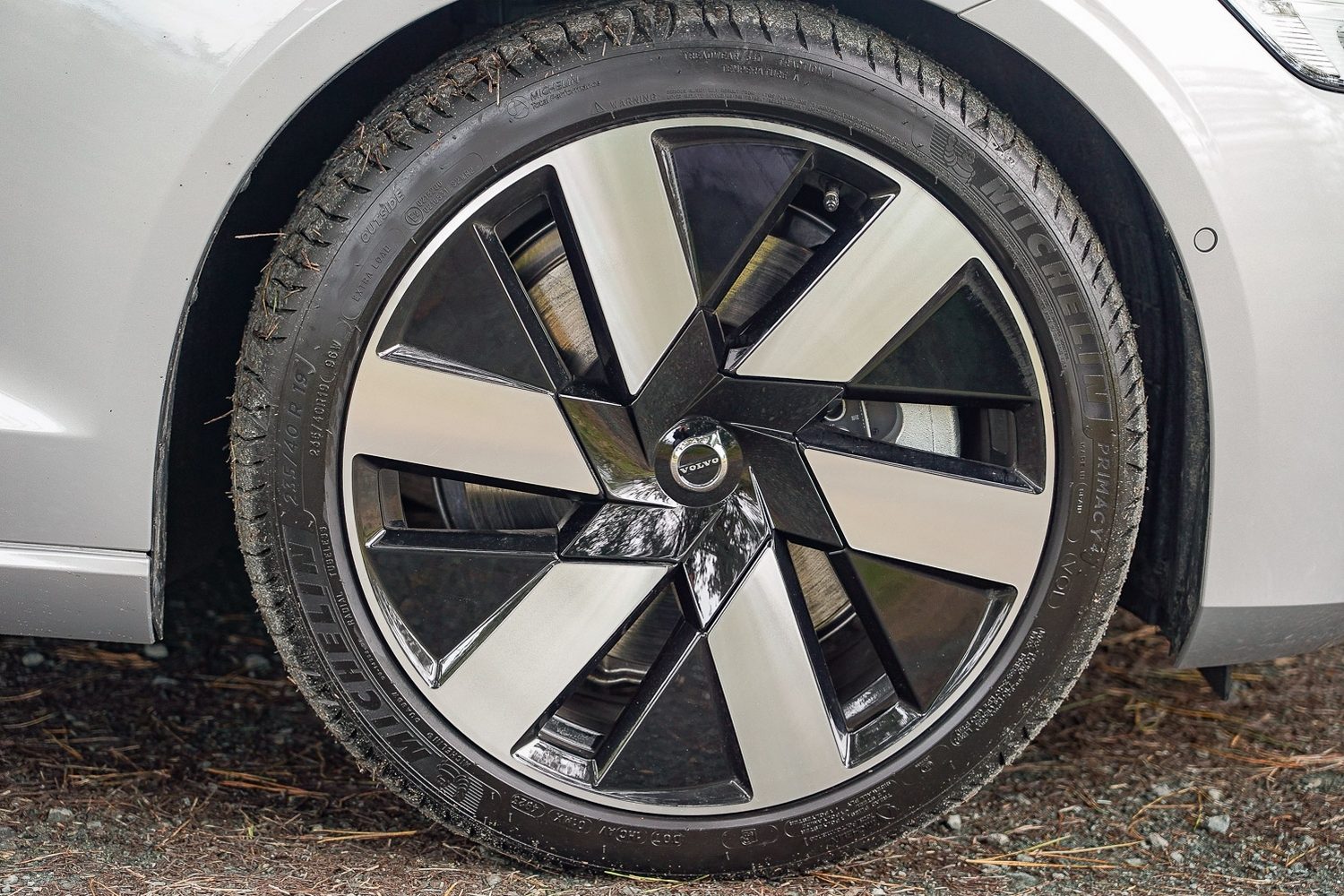
As ever, Volvo loads up the safety kit, with the usual full suite of airbags, whiplash-reducing front seats, side-impact protection, tyre pressure monitoring and two sets of ISOFIX child seat mountings in the back. Electronic aids include cruise control with Intelligent Speed Assist, Road Sign Recognition, Lane Keep and Departure Warning, Oncoming Lane Mitigation and hill start assist.
Move to Ultimate spec, and as well as more power, the equipment list grows to include full LED headlights that dip in sections for oncoming traffic, plus a headlight cleaning system, adaptive cruise control with Pilot Assist for stop-start traffic, blind spot and rear collision warning, a 360-degree camera system, plus park assist, a panoramic sunroof, power adjustment and memory for the front passenger seat, plus a Harman Kardon premium sound system.
The Volvo V60 interior
From the outside, the V60 is a handsome, low-slung machine that really looks the part thanks to its compact and lithe proportions. Thankfully, these stylish looks don’t come at the expense of interior space from a cabin that feels like it’s built to a high standard.
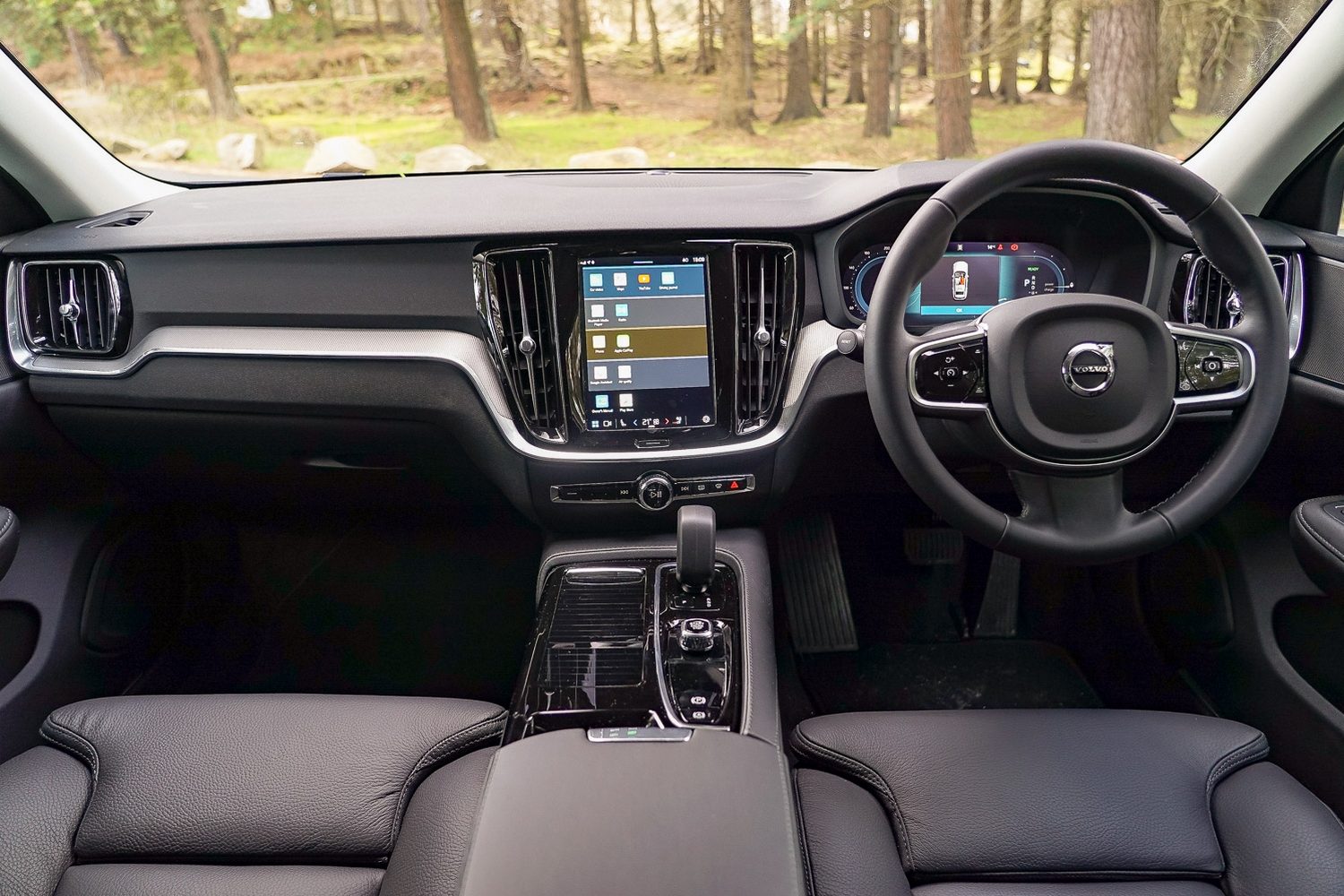
The V60’s cabin has remained largely unchanged since it was first launched in 2016, but that’s no bad thing, because the layout is easy to get along with. The most recent updates introduced Volvo’s Google-based infotainment system, although the nine-inch portrait touchscreen isn’t the biggest available these days, but it works perfectly well once you’re used to its quirks. We particularly like the large 12-inch driver’s display, which shows plenty of information and is operated via buttons on the front of the heated multifunction steering wheel. No, it’s not as customisable as some, but that’s hardly a deal-breaker.
As well as offering the latest safety kit, Volvo has built a reputation for making some of the most comfortable seats in any car, and the V60 doesn’t disappoint. Along with heating for four seats, there is electric adjustment and memory function for the driver’s chair, and the supportive cushions mean long journeys are a piece of cake.
Back-seat comfort is good, too, although the V60 is better thought of as a four-seater with an occasional middle rear seat, because the central chair is on the narrow side, and the car’s large transmission tunnel means legroom is limited in that spot.
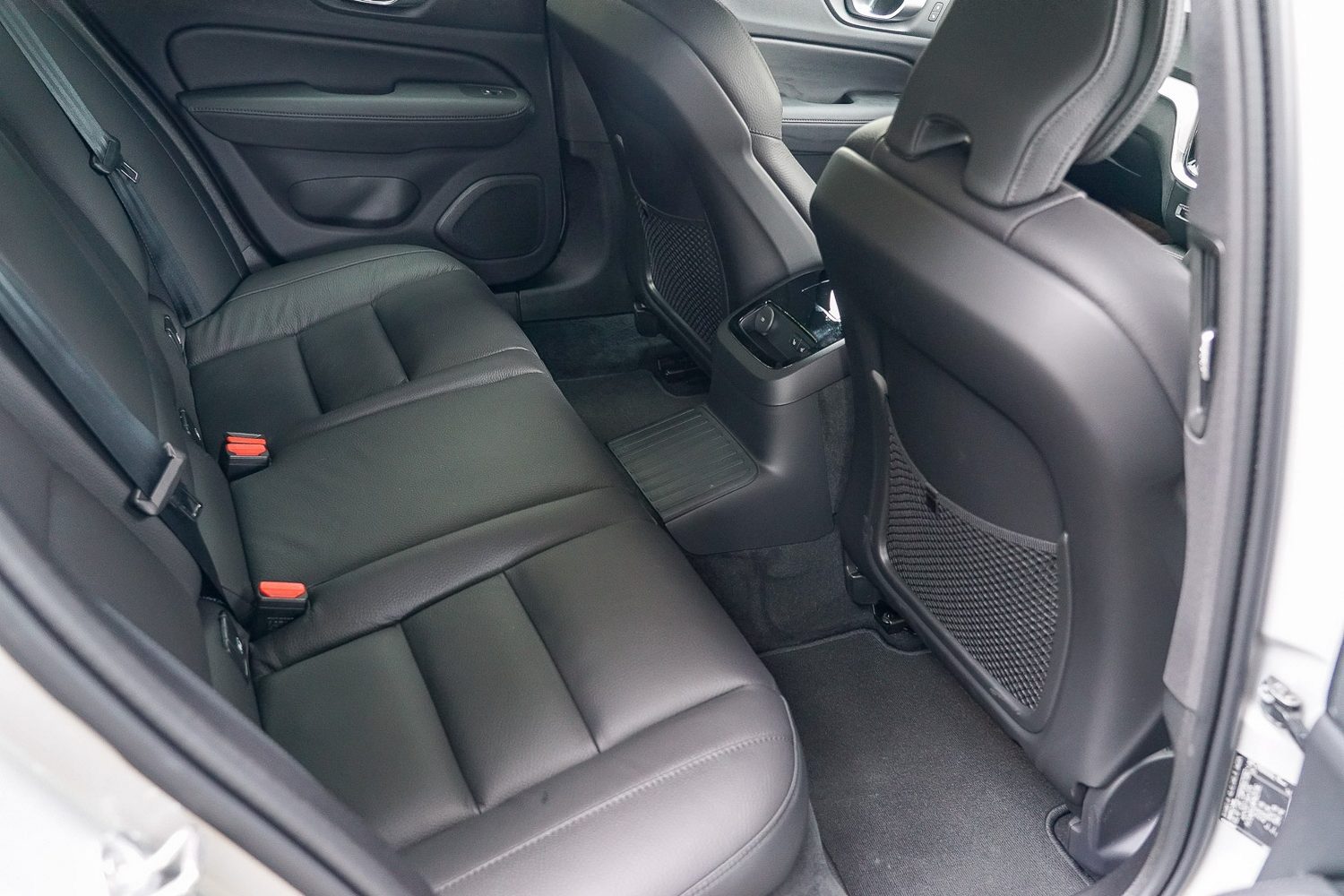
At the back, the V60 has a boot that measures 519 litres in five-seat mode. It’s easily accessible via the power-operated tailgate, while folding the back seats liberates 1,431 litres of space. There’s a 12-volt power supply in the back, while lashing eyes will help tie down any loose items left inside.
The Volvo V60 driving experience
While the official range is 92km for the V60 on battery power alone, the car we had on test saw the range predictor estimating 60km from the battery after a full charge. There is an option to use electric mode on its own by selecting it via the touchscreen, which is great if you want to maximise driving with zero local emissions over shorter journeys. But as with most plug-in hybrids, we found the best way to use the V60’s energy was to let the car’s electronics manage the flow between the different power sources.
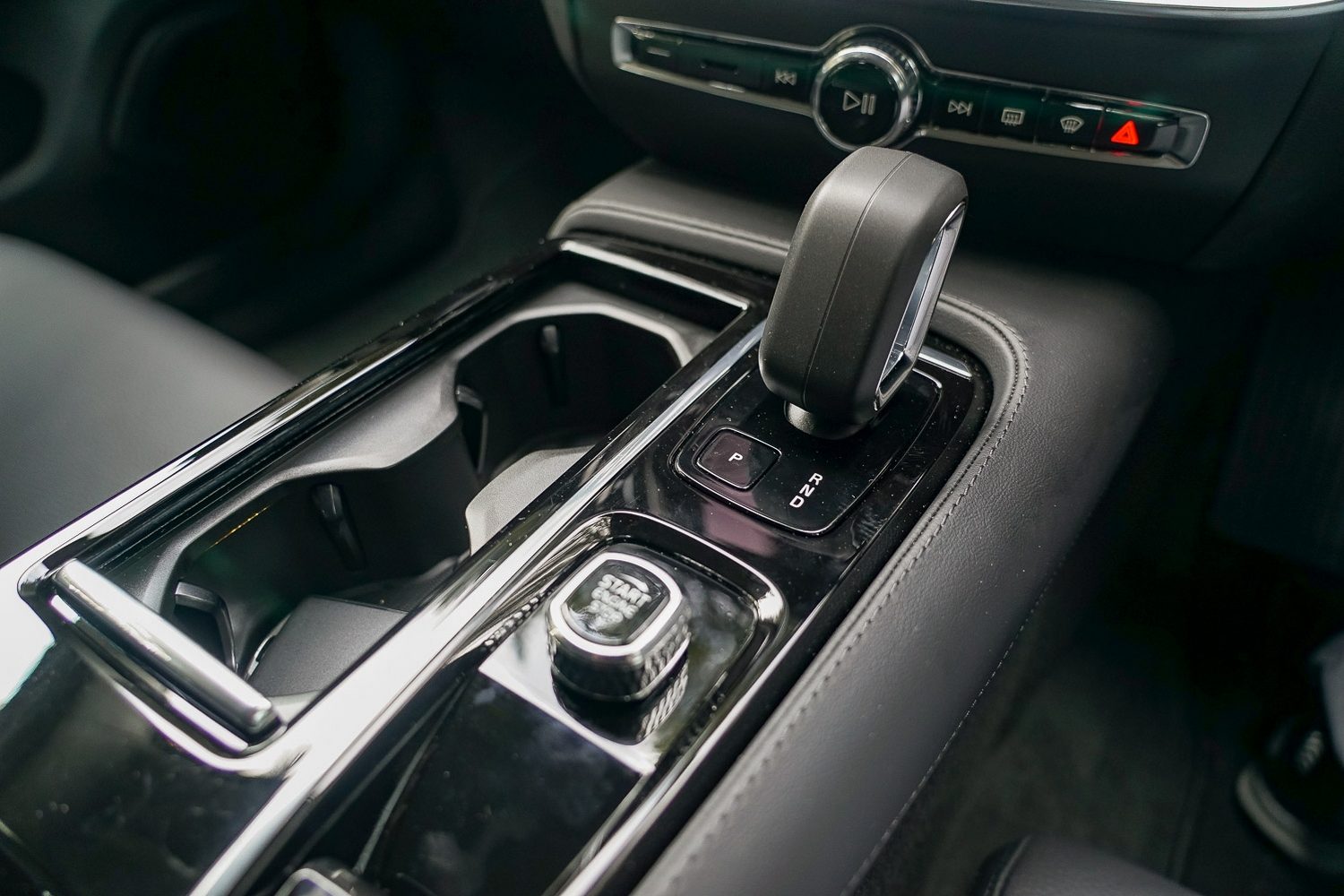
Over 400km of driving (and with just the one charge), we saw the V60 use 7.0 litres/100km, while a motorway run with an uncharged battery saw that rise to around 10 litres/100km. As with every plug-in hybrid car, what fuel economy you achieve will depend entirely on how often you charge the battery from an external source, and the more often you can do it, the better, otherwise you’re just driving a powerful petrol estate that has the extra weight of the plug-in powertrain to haul around.
The overriding impression of the V60 is that it’s an exceptionally smooth performer. The plug-in powertrain has been offered for a while and has been refined over time, and here it works quite well. The engine is quiet when it fires up, and only gets vocal when pushed, although it doesn’t sound unpleasant. Acceleration is very impressive, with a big surge of mid-range torque on offer as the electric motor cuts in.
With the motor sending drive to the rear wheels, there’s four-wheel drive, although the system doesn’t feel as smooth or well-integrated as some rival systems. You can feel the rear motor working on occasion, but it has to be really slippery to show it’s active.
Overall, the V60 is a comfortable place to spend time, but it’s not all at sea in corners. There’s good grip, and it’s a pleasant car to drive, if not massively engaging. It ticks a lot of boxes.
Our verdict on the Volvo V60
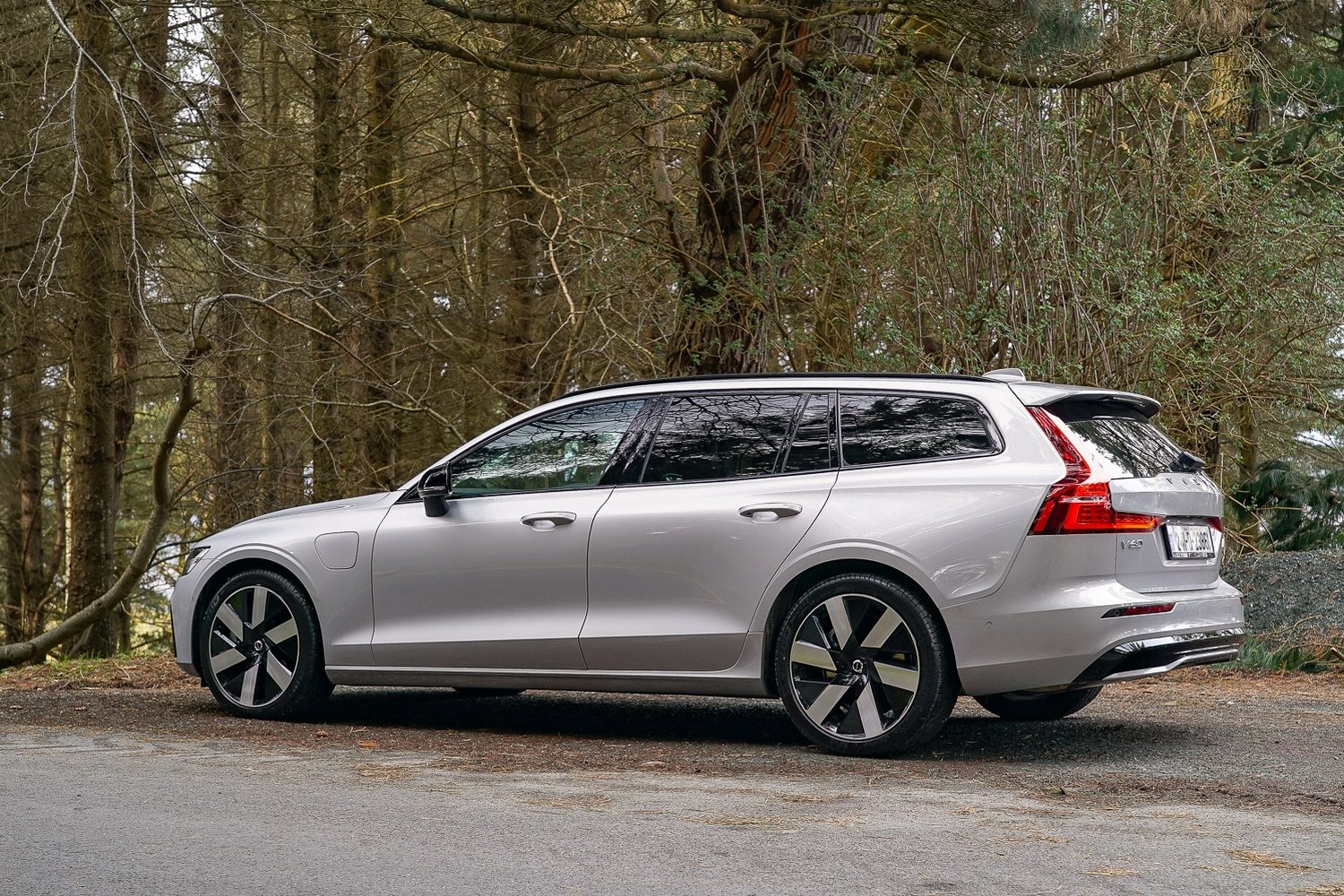
Another chance to drive the V60 confirms what we already knew: that a good estate car is far preferable to an equivalently-priced SUV. The V60 is spacious and practical, but it’s also great to drive and, depending on how it’s used, could be highly efficient. Sadly, most buyers don’t seem to agree with this assessment, which is why the days of the Volvo estate seem numbered. Get one while you can.

